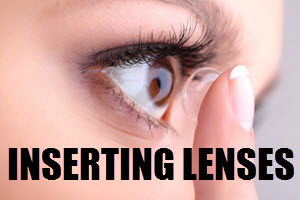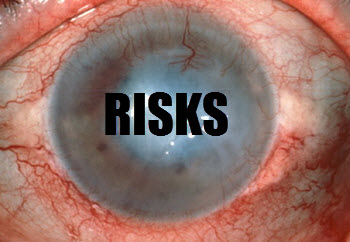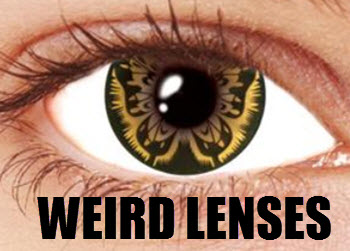The Role of Decorative Lenses in Fashion Photography
The world of fashion photography continually evolves, borrowing elements from various art forms to break conventions and create compelling images. One of the newer additions to this innovative toolkit is decorative lenses, also known as colored contact lenses. These lenses have transcended their original purpose of vision correction or discreet aesthetic enhancement and have become a significant creative asset for photographers and fashion designers.
Enhancing Aesthetic Appeal
Decorative lenses have a unique ability to alter the model’s eye color in ways that can be either subtle or dramatically transformative. By changing the eye color, photographers can harmonize with the overall color scheme of a fashion shoot or add a striking contrast. This form of customization can elevate a photograph from mundane to extraordinary, all with a simple lens swap. The versatility of these lenses makes them a tool of infinite possibilities in offering new visual experiences that may not otherwise be achievable with natural eye colors alone.
Beyond simple color changes, decorative lenses can affect the perceived shape and brightness of the eyes, contributing to a more profound aesthetic impact. For instance, lenses designed to enlarge the iris make the eyes appear larger and more doll-like, which may be desirable for certain fashion editorials. This effect can enhance a model’s presence in the frame, ensuring that the eyes draw viewers into the image. The appeal here is not just in the color shift but in the overall transformation that these lenses can effect when used skillfully.
Creating a Narrative
Fashion photography often seeks to tell a story or evoke certain emotions, and the eyes play a crucial role in these narratives. Decorative lenses allow photographers to create specific looks that align with the story being told. For instance, futuristic themes might utilize lenses with unusual patterns or unnatural colors. Alternatively, a vintage or romantic narrative might require softer, more natural hues. The strategic use of decorative lenses widens the spectrum of possibilities in storytelling through fashion imagery.
When a model dons a pair of decorative lenses, the photographer can imbue the image with depth and emotion unique to those eye changes. The lenses become part of a broader visual language used to communicate the intended narrative. Whether the goal is to create a sense of mystery, allure, or intensity, the eyes—and the decorative lenses that alter them—are powerful conduits for these ideas. As such, lenses are not just an accessory but rather a pivotal narrative device.
Aligning with Current Trends
Fashion is often about being in the moment and on-trend. Decorative lenses enable photographers and models to resonate with current fashion movements. For instance, in recent years, there has been a growing trend embracing bold and vivid color palettes. Utilizing flamboyant or rare eye colors through decorative lenses allows fashion artists to keep pace with these trends without the need for post-production editing. This adaptability and relevance to trends showcase the practical utility of decorative lenses in fashion photography.
Moreover, decorative lenses can serve as a direct response to societal shifts and cultural changes. The fashion world often leads the charge in embracing diversity and inclusivity, and lenses can contribute to this narrative by introducing styles and colors that reflect a broader spectrum of identities and experiences. In this way, decorative lenses can help models and photographers engage with a global audience by mirroring the dynamic and multifaceted world we live in.
Technical Considerations
While decorative lenses offer many aesthetic benefits, several technical considerations must be kept in mind. Lighting plays a pivotal role when shooting with colored contact lenses. Certain lenses can reflect light differently, which might necessitate adjustments in the lighting setup to avoid unwanted glare or reflections. The specific material and design of a lens often determine how it interacts with light. As a result, photographers must test different lighting scenarios to optimize the appearance of the lenses in their shots.
In addition to lighting concerns, the fit and comfort of the lenses are of paramount importance. Photographers must consider the comfort and suitability of lenses for the model, as discomfort can affect the authenticity of expressions, impacting the quality of the photographs. Communication with the model regarding wear time and ensuring that lenses are fitted correctly are crucial steps in maintaining comfort and avoiding any potential health risks associated with improper lens use.
Conclusion
In conclusion, decorative lenses provide fashion photographers with a versatile and impactful tool for enhancing their work. They offer myriad opportunities to experiment with style, thus contributing to the layered narratives and aesthetics of modern fashion photography. As fashion continues to push boundaries, the role of decorative lenses is likely to expand, further integrating into the artistic and technical processes that define fashion shoots.
Decorative lenses hold the promise of keeping fashion photography fresh and dynamic while offering straightforward solutions to complex creative challenges. Their growing prevalance in the industry speaks to their efficacy as a tool while allowing photographers to meet artistic demands without compromising authenticity or quality. As their use becomes more sophisticated, it’s expected that they will continue to inspire new photographic methods and interpretations.
For more insights into the latest developments in fashion photography, artists and enthusiasts can explore professional websites and fashion photography magazines that showcase upcoming trends and innovative uses of tools like decorative lenses. Insights from such sources enable individuals rooted in fashion photography not only to remain relevant but to drive the evolution of the field with informed and creative engagement.



 Cosmetic contact lenses
Cosmetic contact lenses